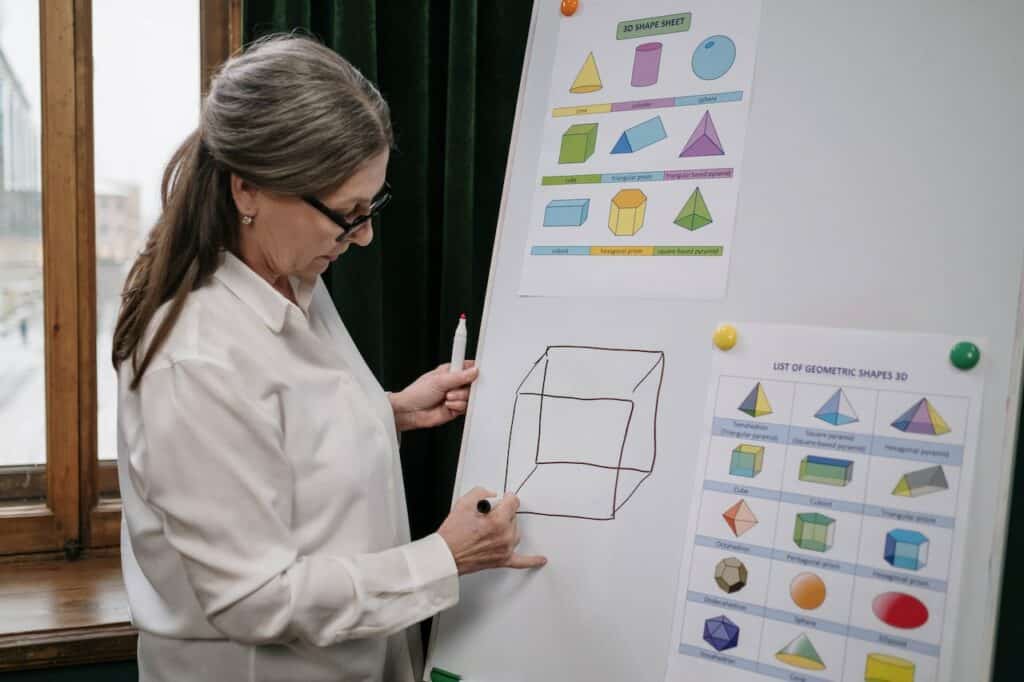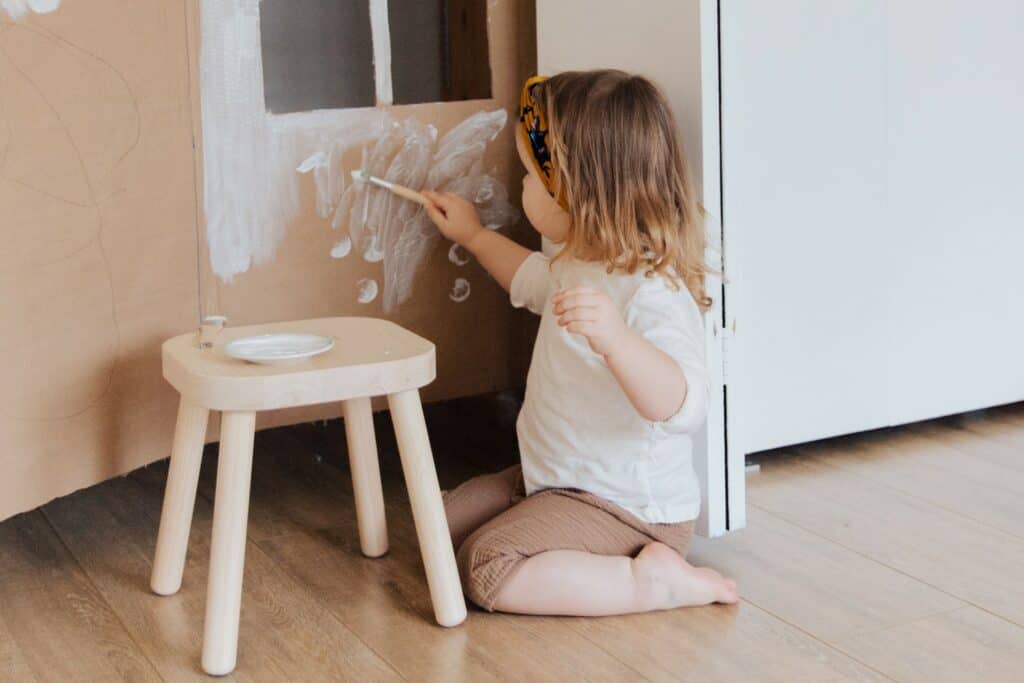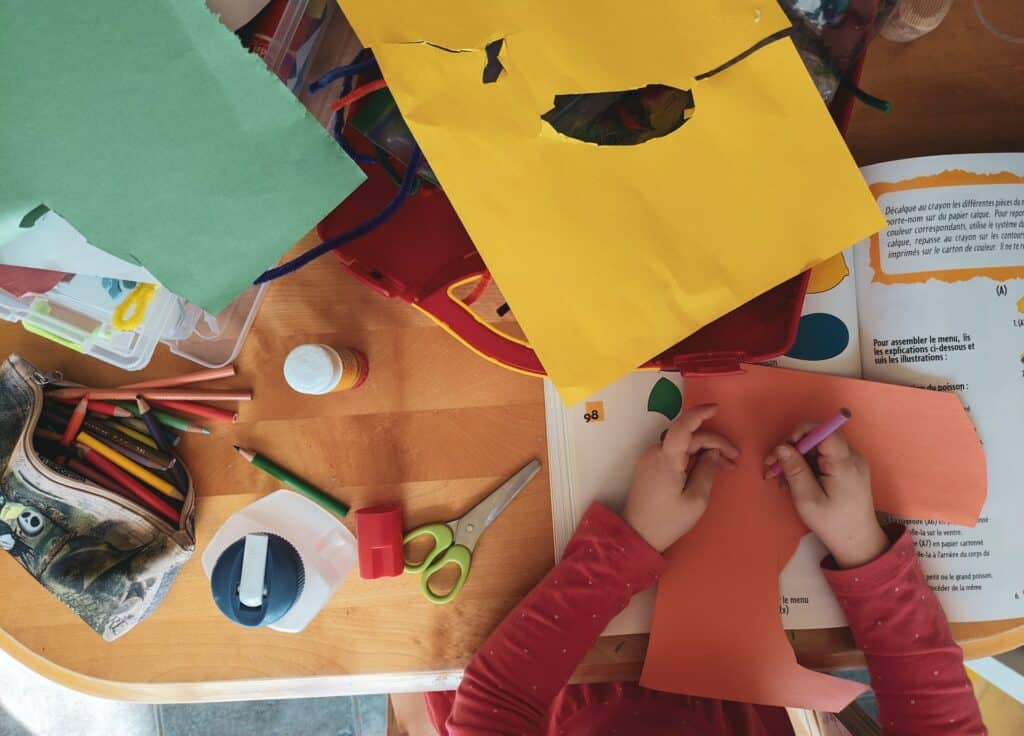Children start learning about shapes from a very young age. They begin by exploring their surroundings and identifying basic shapes like circles, squares, and triangles. As they grow older, they start recognizing more complex shapes like diamonds, rectangles, and hexagons. Understanding shapes is an important milestone in a child’s early development, as it helps them make sense of the world around them.
Learning shapes is a fundamental part of a child’s education. Shapes are not only important for math learning but are also relevant in everyday life. Children learn to identify shapes in objects they see every day, like traffic signs, buildings, and household items. Shapes also play a crucial role in developing cognitive skills and motor skills, which are essential for reading, writing, and overall academic success.
Key Takeaways
- Learning shapes is a crucial early development milestone for children.
- Shapes are not only important for math learning but also have relevance in everyday life.
- Identifying shapes helps in developing cognitive and motor skills that are essential for academic success.
Understanding Shapes: An Early Development Milestone
Learning shapes is an essential milestone in a child’s early development. It is a fundamental skill that helps them understand the world around them. Children start learning about shapes as early as 6 months old, and by the age of 3, most children can identify basic shapes such as circles, squares, triangles, and rectangles.
Shapes are everywhere, and children encounter them in their daily lives. They may see shapes in toys, books, and even food. Parents and caregivers can help children learn about shapes by pointing them out in their surroundings. For example, a parent can ask a child to identify the shapes in a picture book or point out the shapes of objects in their environment.
Learning about shapes helps children develop their spatial awareness, which is an important skill for many areas of life, including math and science. Children who have a strong understanding of shapes are better equipped to understand concepts such as geometry and spatial relationships.
Parents and caregivers can use various methods to teach children about shapes. One effective method is through play. Children can learn about shapes by playing with shape-sorting toys or by creating shapes with building blocks. Another method is through art activities, such as drawing or painting shapes.
In conclusion, understanding shapes is an essential milestone in a child’s early development. Children start learning about shapes at a young age and can identify basic shapes by the age of 3. Parents and caregivers can help children learn about shapes by incorporating them into daily activities and play. By learning about shapes, children develop their spatial awareness, which is a crucial skill for many areas of life.
The Basic Shapes Children Learn
When it comes to learning shapes, children usually start with the most basic ones. These shapes are the foundation for more advanced shapes that they will learn later on. Here are the basic shapes that children learn:

Circle and Oval
The circle and oval are two of the most basic shapes that children learn. They are both round, but the oval is elongated. These shapes are easy for children to recognize because they are all around them, from balls to wheels.
Square and Rectangle
The square and rectangle are two shapes that are easy for children to recognize because they are used in everyday objects such as windows and doors. The square has four equal sides, while the rectangle has two pairs of equal sides.
Triangle
The triangle is a three-sided shape that is often used in construction and architecture. Children can easily recognize this shape because it is used in many everyday objects like pizza slices and traffic signs.
Star
The star is a shape that children may not encounter as often as the other basic shapes, but it is still important for them to learn. It is a shape with five or more points, and it is often used in decorations and artwork.
More Advanced Shapes
Once children have mastered the basic shapes, they can move on to more advanced ones. These shapes include the diamond, pentagon, hexagon, and heart. These shapes are more complex and require more advanced understanding of geometry.
Overall, learning basic shapes is an important part of a child’s development. It helps them understand the world around them and prepares them for more complex concepts like geometry. By mastering basic shapes, children can build a strong foundation for their future learning.
Methods of Teaching Shapes to Children
Teaching shapes to children can be a fun and interactive experience. There are various methods that parents and educators can use to teach children about shapes. Here are some effective methods to help children learn about shapes:

Through Toys and Puzzles
Toys and puzzles are great tools for teaching children about shapes. Shape sorters, for example, can help children identify and match shapes. Board games that involve shapes can also be a fun way to teach children about shapes. Puzzles with different shapes can help children with their problem-solving skills and spatial awareness.
Incorporating Shapes in Daily Routines
Parents can incorporate shapes into their daily routines to help children learn about shapes. For example, parents can point out shapes in their surroundings, such as the circle on a stop sign or the rectangle of a door. This can help children recognize shapes in the real world and understand their practical uses.
Utilizing Books and Educational Games
Books and educational games can also be effective tools for teaching children about shapes. Children’s books that feature shapes can help children learn about shapes in a fun and engaging way. Educational games that involve identifying and matching shapes can also be a great way to teach children about shapes.
In conclusion, there are various methods that parents and educators can use to teach children about shapes. Through the use of toys and puzzles, incorporating shapes in daily routines, and utilizing books and educational games, children can learn about shapes in a fun and interactive way.
The Role of Shapes in Math Learning
Shapes play a crucial role in math learning for children. They are the building blocks of geometry and help children develop important math skills such as problem-solving, counting, multiplication, and understanding formulas.
One of the first shapes children learn is the triangle. Triangles are important because they help children understand angles. By learning about angles, children can develop an understanding of how shapes fit together to create larger shapes. This knowledge is essential in learning about area and perimeter.
Shapes also help children develop problem-solving skills. For example, when children are asked to find the area of a shape, they must use critical thinking skills to determine the correct formula to use. This type of problem-solving is important in all areas of math and helps children develop a deeper understanding of mathematical concepts.
In addition, shapes can be used to teach children about the number line. By understanding that shapes can be divided into equal parts, children can learn about fractions and decimals. This knowledge is essential in higher-level math courses.
Overall, shapes are an essential part of math learning for children. By understanding shapes, children can develop important math skills and gain a deeper understanding of mathematical concepts.
Shapes and Their Relevance in Everyday Life
Shapes are an essential part of everyday life. Children learn about shapes from an early age, and they are all around them in the world. Understanding shapes is important for children as it helps them to make sense of the world around them.
Shapes are used in many aspects of everyday life, including road signs, buildings, and even food. For example, traffic signs use shapes to convey important information to drivers, such as stop signs, yield signs, and speed limit signs. Buildings also use shapes to create interesting designs and to make them functional, such as windows, doors, and roofs.
In addition, shapes are used in the food industry to make food more appealing and to create interesting designs. For example, cookies can be shaped like stars, hearts, or circles, and cakes can be shaped like animals or objects.
Children learn about shapes through play and exploration. They learn about the different shapes, such as circles, squares, triangles, and rectangles, and how they can be combined to create more complex shapes. They also learn about the properties of shapes, such as the number of sides and angles.
In conclusion, shapes are an important part of everyday life, and children learn about them from an early age. Understanding shapes helps children to make sense of the world around them and is essential for their development.
The Connection Between Learning Shapes and Colors
Learning shapes and colors is an essential part of a child’s early development. Children typically begin to learn about shapes and colors around the age of two. At this age, they start to recognize basic shapes, such as circles, squares, and triangles, and colors such as red, blue, and yellow.

There is a strong connection between learning shapes and colors. As children learn about different shapes, they also learn about the colors that are associated with them. For example, a circle may be red, a square may be blue, and a triangle may be yellow. This connection helps children to associate colors with specific shapes, which can be helpful when they are learning to identify objects.
Teaching colors to children can be done in a variety of ways. Parents and caregivers can use everyday objects to help children learn colors. For example, they can point to a red apple and say, “This apple is red.” They can also use toys and games that involve colors, such as building blocks or puzzles.
It is important to note that children learn colors at different rates. Some children may learn colors quickly, while others may take longer. Parents and caregivers should be patient and provide plenty of opportunities for children to learn about colors.
In conclusion, learning shapes and colors is an important part of a child’s early development. There is a strong connection between learning shapes and colors, and parents and caregivers can use everyday objects and games to help children learn about them.
Developing Cognitive Skills Through Shapes
Learning shapes is an essential part of children’s early education, as it helps them develop cognitive skills that are crucial for their future academic success. Identifying and sorting shapes helps children develop problem-solving skills, as well as memory and critical thinking.
As children learn to draw shapes, they also develop fine motor skills and hand-eye coordination, which are essential for writing and other activities. Shape recognition is also important, as it helps children analyze and compare different shapes and identify patterns.
Sorting shapes is an excellent way for children to develop classification skills. By sorting shapes into groups based on their similarities and differences, children learn to identify and categorize objects based on their attributes.
In addition to identifying and sorting shapes, children can also learn to analyze and compare them. By examining the properties of different shapes, such as their sides, angles, and vertices, children can develop critical thinking skills and learn to identify patterns.
Overall, learning shapes is an important part of children’s early education, as it helps them develop essential cognitive skills that will benefit them throughout their academic and personal lives.
The Importance of Shapes in Reading and Writing
Shapes play a crucial role in the early development of children’s literacy skills. Learning shapes is not just about identifying different geometric forms, but it also helps kids to read and write letters and words more effectively.

When children learn shapes, they develop visual discrimination skills, which help them differentiate between different letters and words. For example, the letter ‘O’ and the number ‘0’ are easily confused by young children because they look similar. However, if children have a strong understanding of shapes, they can easily distinguish between them.
Moreover, when children learn shapes, they also develop spatial awareness, which is essential for reading and writing. Spatial awareness helps children understand the orientation and position of letters and words on a page. It also helps them to understand the direction of writing and the spacing between letters and words.
Learning shapes also helps children to develop their fine motor skills, which are essential for writing. Drawing and tracing shapes can help children develop the hand-eye coordination and muscle control needed for writing letters and words.
In conclusion, shapes are a fundamental part of children’s early literacy development. By learning shapes, children develop visual discrimination, spatial awareness, and fine motor skills, which are essential for reading and writing.
Exploring Shapes Beyond the Classroom
Learning shapes is an important part of early childhood education. While children learn about shapes in the classroom, there are many opportunities to explore shapes outside of school as well. By incorporating fun and engaging activities, children can develop a deeper understanding of shapes and their properties.
Games
Games are a great way to make learning about shapes fun. There are many games that can be played to help children learn about shapes, such as shape matching games, puzzles, and memory games. These games can be played at home or on the go, making them a convenient way to reinforce shape recognition skills.
Shape Scavenger Hunt
A shape scavenger hunt is a fun way to get children excited about exploring shapes in the world around them. Parents or caregivers can create a list of shapes for children to find, such as circles, squares, and triangles. Children can then search their surroundings for objects that match the shapes on the list. This activity not only helps children learn about shapes, but also encourages them to observe their environment and think creatively.
Shape Hunt
Similar to a shape scavenger hunt, a shape hunt involves searching for specific shapes in the environment. However, instead of a list, children are given a specific shape to find, such as a square or a triangle. This activity can be done anywhere, from the park to the grocery store. By looking for shapes in everyday objects, children can develop a deeper understanding of the properties of shapes and how they fit into the world around them.
Overall, exploring shapes beyond the classroom can be a fun and engaging way for children to learn about shapes and their properties. By incorporating games, scavenger hunts, and other activities, children can develop a deeper understanding of shapes and their place in the world.
How Shapes Contribute to Motor Skills Development
Learning shapes is an essential part of a child’s development. It not only helps them recognize and identify objects, but it also contributes to their motor skills development. The ability to manipulate and control objects is crucial for a child’s physical development, and shapes play a significant role in this process.

Shapes help children develop their fine motor skills, which are essential for tasks that require hand-eye coordination, such as writing, drawing, and using scissors. By learning to manipulate shapes, children develop their hand muscles, hand-eye coordination, and dexterity. These skills are crucial for a child’s success in school and beyond.
Shapes also contribute to a child’s gross motor skills development. Gross motor skills involve the large muscles of the body and are essential for activities such as running, jumping, and climbing. Learning to recognize and identify shapes can help children develop spatial awareness, which is necessary for navigating their environment.
In addition to motor skills development, learning shapes can also contribute to a child’s cognitive development. By recognizing and categorizing shapes, children develop their ability to think abstractly and logically. This skill is essential for problem-solving and critical thinking, which are crucial for success in school and beyond.
Overall, learning shapes is a critical part of a child’s development, and it contributes to their motor skills development, cognitive development, and overall success in life. Parents and caregivers can help children learn shapes by providing them with opportunities to play with shape-sorting toys, draw and color shapes, and engage in other activities that involve manipulating and categorizing shapes.
Related Posts:
Frequently Asked Questions
What shapes should a 2 year old know?
By the age of 2, most children are able to identify basic shapes such as circles, squares, and triangles. They may also be able to identify simple shapes such as hearts and stars.
What shapes should a 4 year-old know?
At the age of 4, children should be able to identify more complex shapes such as ovals, diamonds, and rectangles. They should also be able to recognize patterns and shapes that are made up of smaller shapes.
What shapes should a 5 year old know?
By the age of 5, children should be able to identify and name more advanced shapes such as hexagons, pentagons, and octagons. They should also be able to recognize shapes in the world around them such as stop signs, traffic lights, and street signs.
What shapes do 3 year olds need to know?
At the age of 3, children should be able to identify and name basic shapes such as squares, circles, and triangles. They may also be able to identify shapes that are made up of smaller shapes such as a rectangle made up of two squares.
How to teach shapes to toddlers?
One effective way to teach shapes to toddlers is through play. You can use toys such as blocks and puzzles to help them identify and name different shapes. You can also point out shapes in the world around them such as the shape of a cookie or a ball.
Should an 18 month old know shapes?
While it is not expected for an 18 month old to know shapes, some children may be able to identify basic shapes such as circles and squares. However, it is important to remember that every child develops at their own pace and there is no need to worry if your child is not yet able to identify shapes at this age.

Iesha is a loving mother of 2 beautiful children. She’s an active parent who enjoys indoor and outdoor adventures with her family. Her mission is to share practical and realistic parenting advice to help the parenting community becoming stronger.
